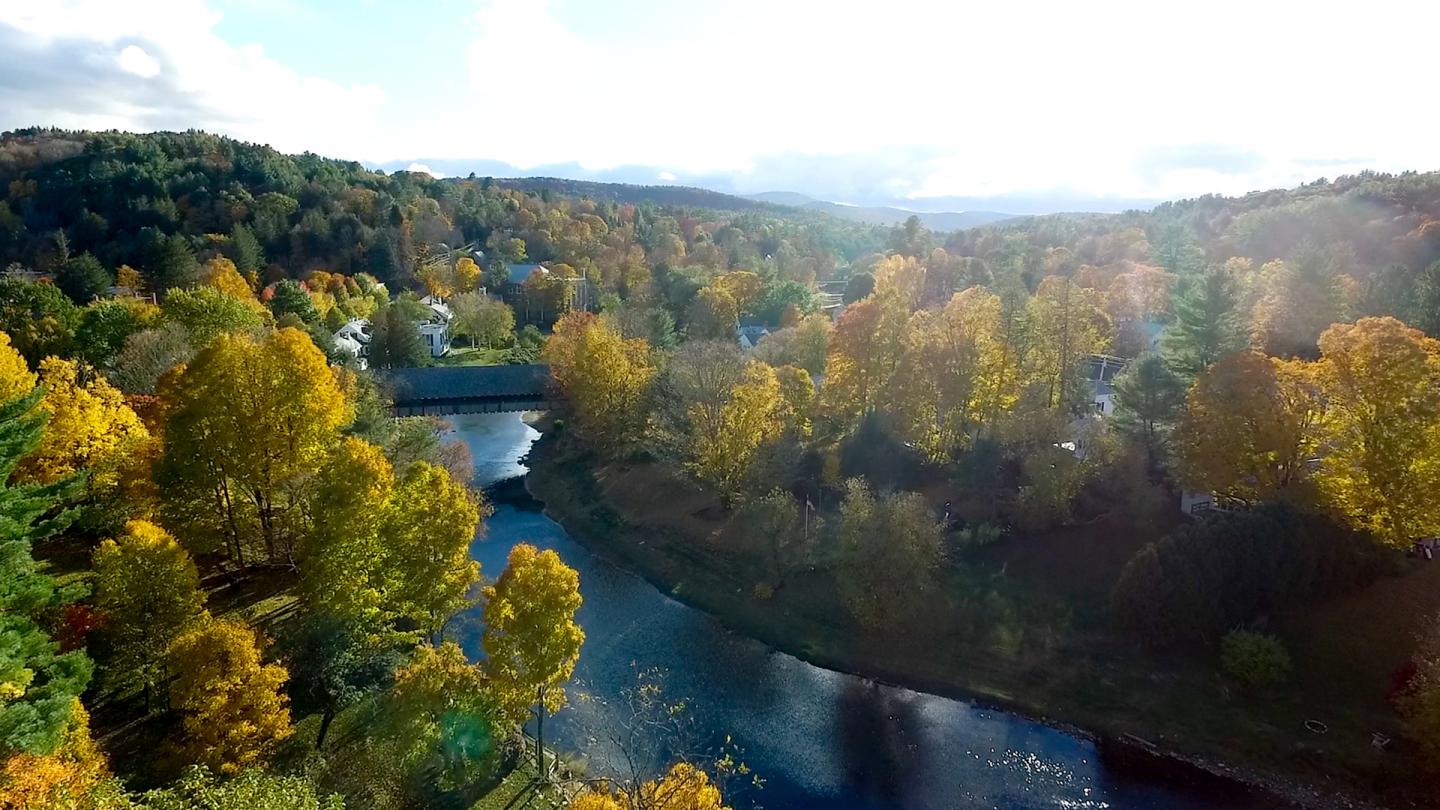Vermont is expensive due to limited housing supply and a small population, which contribute to housing scarcity and drive up prices. The state’s natural beauty and appeal as a tourist destination also increase demand, further inflating the cost of living.
High costs for housing and other necessities, such as food, make living in Vermont financially and logistically challenging. The high cost of maintaining homes and the lack of affordable housing options are additional factors that make Vermont an expensive place to live.
Many people are leaving the state because of the high cost of living and difficulties in finding suitable housing. Gentrification in certain areas, like Burlington, is also a contributing factor to the rising prices in the state.
Limited Housing Supply And High Demand
Limited housing supply in Vermont is one of the key factors contributing to its high cost of living. With a small population and limited available housing options, the demand for housing outweighs the supply. This scarcity creates a competitive market, driving prices up.
Additionally, Vermont’s natural beauty and tourist attractions further increase the demand for housing. The combination of limited supply and high demand creates a situation where housing prices become expensive. It becomes challenging to find affordable housing options in the state, as the available housing is often expensive.
This imbalance between supply and demand has resulted in Vermont being known for its high cost of living.
Cost Of Living Factors
Vermont’s higher cost of living compared to other states can be attributed to several factors. Firstly, taxes in Vermont are relatively high, including property taxes and income taxes. Healthcare costs are also a significant contributor, with insurance premiums and medical expenses being more expensive than in other states.
Education costs, including tuition fees for colleges and universities, add to the overall cost of living. Additionally, utilities such as electricity, heating, and water can be more expensive in Vermont due to its colder climate. Transportation costs, including gas prices and vehicle maintenance, also contribute to the higher cost of living.
These factors combined make Vermont a more expensive place to live compared to other states.
Tourism And Natural Beauty
Vermont’s natural beauty is a major draw for tourists, resulting in a significant economic impact. The influx of visitors has led to increased demand for housing and services, driving up costs. Limited housing supply and a small population contribute to housing scarcity and higher prices.
Additionally, the state’s tourism appeal has created a competitive market, further inflating costs. Despite its rural nature, Vermont remains expensive due to these factors. As a result, finding affordable housing can be challenging, and other expenses such as food are also costly.
The high cost of living in Vermont is a deterrent for some residents, leading to an exodus of people from the state. The Legislature needs to address the issue to prevent further population decline.
Lack Of Affordable Housing Programs
The lack of affordable housing programs in Vermont is one of the main reasons why the state is so expensive. Low-income residents face numerous challenges in finding affordable housing due to the insufficient number of these programs. This shortage leads to a rise in housing prices, making it difficult for those on a tight budget to find suitable and affordable homes.
The consequences of this lack of affordable housing are far-reaching. It puts a strain on the finances of low-income residents and forces them to spend a larger portion of their income on housing, leaving less money for other necessities. Additionally, it creates a cycle of poverty, as individuals and families struggle to meet their basic needs due to the high cost of housing.
Overall, the issue of insufficient affordable housing programs contributes significantly to the high cost of living in Vermont.
Rural Location And Infrastructure
Vermont’s high cost of living can be attributed to several factors, including its rural location and limited infrastructure. Challenges of rural living in Vermont have a significant impact on costs. Limited infrastructure leads to higher transportation costs in rural areas.
The state’s natural beauty and tourism appeal contribute to increased demand for housing, while limited housing supply and a small population further drive up prices. Additionally, the cost of living in Vermont is influenced by other factors such as expensive food prices.
Finding affordable housing in Vermont is particularly difficult, with available options often being pricey. These factors combined make living in Vermont financially challenging for many people, leading to an exodus from the state. The high cost of living and lack of affordable housing have become pressing issues that the Vermont legislature needs to address to retain residents.
Higher Education Costs
Vermont’s high cost of living can be attributed to various reasons. One major factor is the higher education costs, specifically the high tuition fees at Vermont colleges and universities. This greatly impacts the cost of living for students and their families.
Additionally, limited financial aid options for Vermont residents further contribute to the expense. Housing scarcity and a small population also play a role in driving up prices. The state’s natural beauty and tourism appeal increase demand for housing, resulting in limited availability and higher costs.
While Vermont offers many advantages, such as no income tax, these factors contribute to its reputation as an expensive place to live. However, it’s important to consider these factors in conjunction with the overall quality of life and opportunities the state provides.
State Taxes And Regulations
Vermont’s high cost of living can be attributed to its state taxes and regulations. The state imposes higher taxes compared to other states, placing a burden on businesses and individuals alike. These higher taxes contribute to increased costs for housing, food, and other necessities.
Additionally, Vermont’s taxation policies and regulations make it difficult for businesses to thrive, leading to limited job opportunities and a stagnant economy. The impact of these policies on the cost of living in Vermont cannot be overstated. The state’s natural beauty and tourism appeal also drive up demand for housing, further exacerbating the affordability issue.
Overall, the combination of high taxes, limited job opportunities, and increased demand for housing make Vermont an expensive place to live.

Credit: www.woodstockvt.com
Energy Costs
Vermont’s high energy costs contribute to its overall expensive living expenses. The state’s dependence on expensive energy sources drives up prices. The impact on the cost of living is significant, as these higher energy costs directly affect housing, transportation, and utility expenses.
Limited options for energy sources, such as renewable energy, lead to increased costs for households and businesses alike. This reliance on expensive energy puts a strain on residents’ budgets and makes Vermont one of the more expensive states to live in.
Additionally, these energy costs can deter new businesses from establishing themselves in Vermont, further impacting the local economy. Overall, the high energy costs in Vermont are a major factor contributing to the state’s expensive living conditions.
Food And Grocery Prices
Vermont’s high cost of living can be attributed to several factors, including higher food and grocery prices. Limited access to affordable groceries plays a significant role in driving up these prices. The state’s rural nature and smaller population contribute to the scarcity of housing, resulting in higher overall living costs.
Additionally, Vermont’s natural beauty and appeal as a tourist destination increase demand for housing, further driving up prices. These factors create a challenging housing market, making it difficult to find affordable housing options. The combination of high food and grocery prices, along with the impact on the overall cost of living, contributes to Vermont’s reputation as an expensive state to live in.
Environmental Regulations And Green Initiatives
Expensive It is no secret that Vermont has a reputation for being expensive, and there are numerous factors contributing to this. One major aspect is the state’s strict environmental regulations and green initiatives. While these initiatives are necessary for preserving Vermont’s natural beauty, they also impact businesses by increasing costs.
Additionally, the focus on renewable energy and the push for sustainable practices comes with its own financial burdens. The costs associated with implementing and maintaining these initiatives are often passed onto consumers, resulting in higher prices for goods and services.
Furthermore, these stringent environmental regulations not only affect businesses, but they also impact the overall cost of living in Vermont. Residents may experience higher expenses for housing, utilities, and transportation as a result. Ultimately, while Vermont’s commitment to environmental preservation is commendable, it does contribute to the state’s higher cost of living.
Is Vermont High Cost Of Living?
Vermont has a high cost of living due to limited housing supply and high demand, driving up prices.
Why Is Rent So High In Vermont?
Rent is high in Vermont due to limited housing supply and a small population, leading to housing scarcity and driving up prices.
Are Homes Expensive In Vermont?
Homes in Vermont can be expensive due to limited housing supply and high demand.
How Much Money Do You Need To Live Comfortably In Vermont?
To live comfortably in Vermont, you need a sufficient amount of money due to high living costs.
Conclusion
Overall, Vermont’s high cost of living can be attributed to several factors. Limited housing supply and a small population contribute to housing scarcity, driving up prices. The state’s natural beauty and tourism appeal increase demand for housing, further contributing to its high cost.
Additionally, the high taxes and cost of utilities in Vermont add to the overall expense of living in the state. The lack of affordable housing options makes it difficult for residents to find suitable and affordable accommodations. Other costs, such as groceries, gas, and restaurants, are also higher compared to other states.
Despite being a rural state, Vermont’s expenses remain high, making it challenging for many individuals and families to afford a comfortable lifestyle. It’s important to consider these factors when assessing the cost of living in Vermont.

